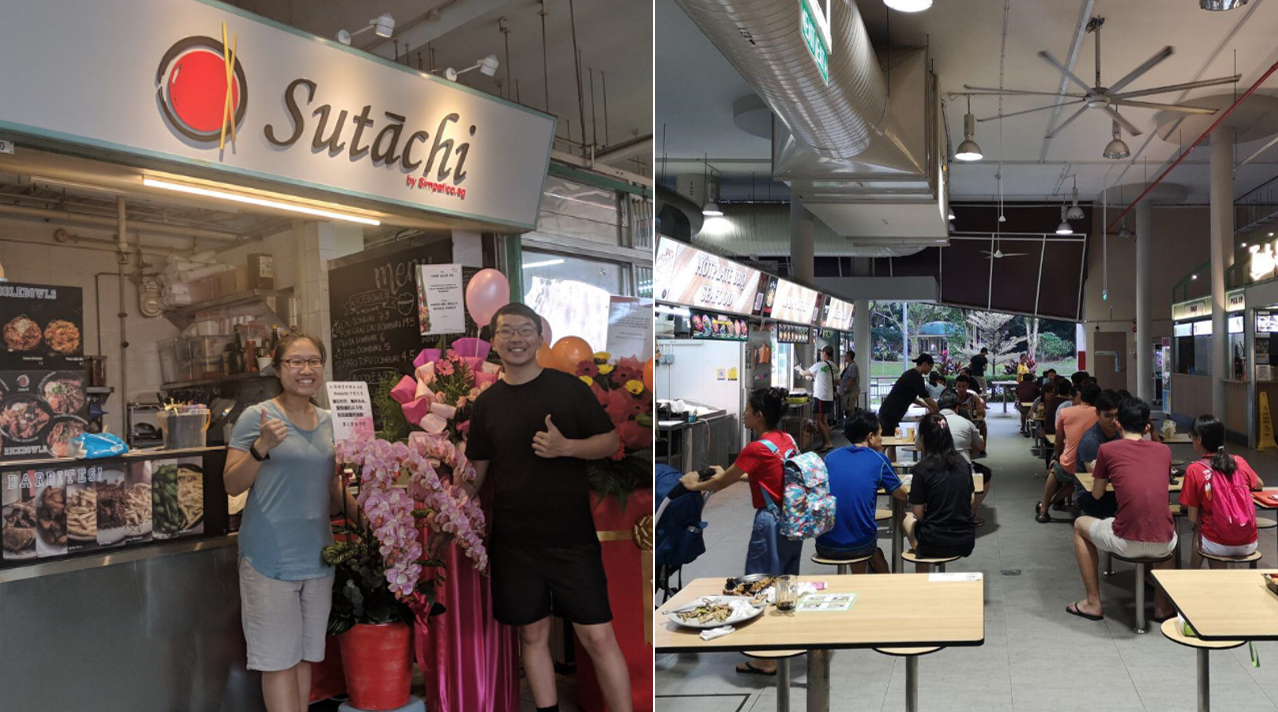It is tough being a hawker in Singapore's cutthroat F&B industry.
Sutachi to close
In a recent Channel NewsAsia report, two Singaporean hawkers, 32-year-old Gay Yu Ting and 28-year-old business partner Alex Ho have decided to close shop after making substantial losses over a year.
Both of them invested S$15,000 of their own savings each into the venture to open Sutachi in Dec. 2017.
Sutachi sells Japanese-Italian fusion food at Chinatown Complex, with one rice bowl costing between S$5 and S$7.50.
According to Gay, business was initially brisk for the first three months or so.
After that, however, the stall was not making enough money for the business to be sustainable.
Costs S$8,000 monthly to run the stall
Gay listed the high costs of running the hawker stall:
- Rent, utilities, cleaning services: S$1,500
- Ingredients: S$2,000 to S$3,400
- Monthly salary of both of them: S$2,000 each
The total monthly expenses came up to around S$8,000 -- meaning that they would have to sell 1,300 rice bowls a month:
“With the expenses, it comes up to almost S$8,000. The average price of our food here is S$6. To hit S$8,000, we’ll have to sell about 1,300 rice bowls a month. It’s about 60 day. When we started the stall, we agreed that our daily target is 50 to 60 bowls or about S$500 a day."
When the stall could not cover their salaries of S$2,000 each, they took pay cut and each took home around S$1,000, or less.
"We have never taken a full salary in the last 14 months," she said.
The duo is not the first to highlight the costs of running a hawker business.
Last year, A Noodle Story posted a breakdown of the cost of their ingredients to explain how artificially depressed prices come at the expense of hawkers:
And more recently, Li Ruifang, a third-generation hawker, also spoke out against Singaporeans who complain about the price of hawker fare:
Social enterprise hawker centres
The topic of hawker centres in Singapore is a contentious one given, how more hawkers are finding it increasingly difficult to stay afloat with the low profit margins.
In a bid to help protect Singapore's hawker culture, social enterprise hawker centres (SEHCs) were introduced by the government.
However, hawkers have faced numerous challenges, like a lack of visitors to the hawker centre:
High miscellaneous costs are also a problem.
Gay and Ho told CNA that they considered opening a stall in a social enterprise hawker centre, but found it too expensive.
They were quoted about S$4,000 in monthly costs to run a stall at a SEHC, including rent, conservancy charges, cleaning fees and rental of a cashless payment system.
On top of the S$4,000, they still had to consider food costs, salaries, and their utility bill.
Other initiatives to support hawkers
Other than SEHCs, Senior Minister of State for the Environment and Water Resources Amy Khor has previously highlighted other government initiatives, such as a productivity grant, an incubation stall programme, and a hawker business management course.
The incubation stall programme came out two months after Gay and Ho started Sutachi. In the CNA interview, Ho said:
"If we started our business later, we could have applied to the programme. Maybe it will help to cut some losses."
Nevertheless, the duo felt that Sutachi was a good opportunity for them to learn about the hawker trade:
“I don’t think we failed. I take it as one year’s school fees. We still got to learn. We were losing money but we are happy that we managed to stay afloat for a year without having to top-up money or take loans."
Top photo composite image, from Sutachi's Facebook page & Joshua Lee.
Content that keeps Mothership.sg going
??
Here's how to pair your CNY snacks with beer to look like a true blue connoisseur.
????
What in the world are cashless angpaos?
?⏩?
Finally escape from your CNY fatigue with these heavily discounted cruise fares.
???
Very sick but cannot miss work? This gets you covered $$$.
??
Millennials are strawberries? Can eat one ah?
If you like what you read, follow us on Facebook, Instagram, Twitter and Telegram to get the latest updates.
